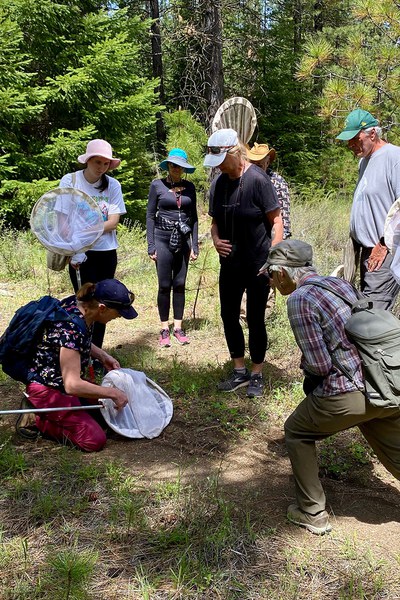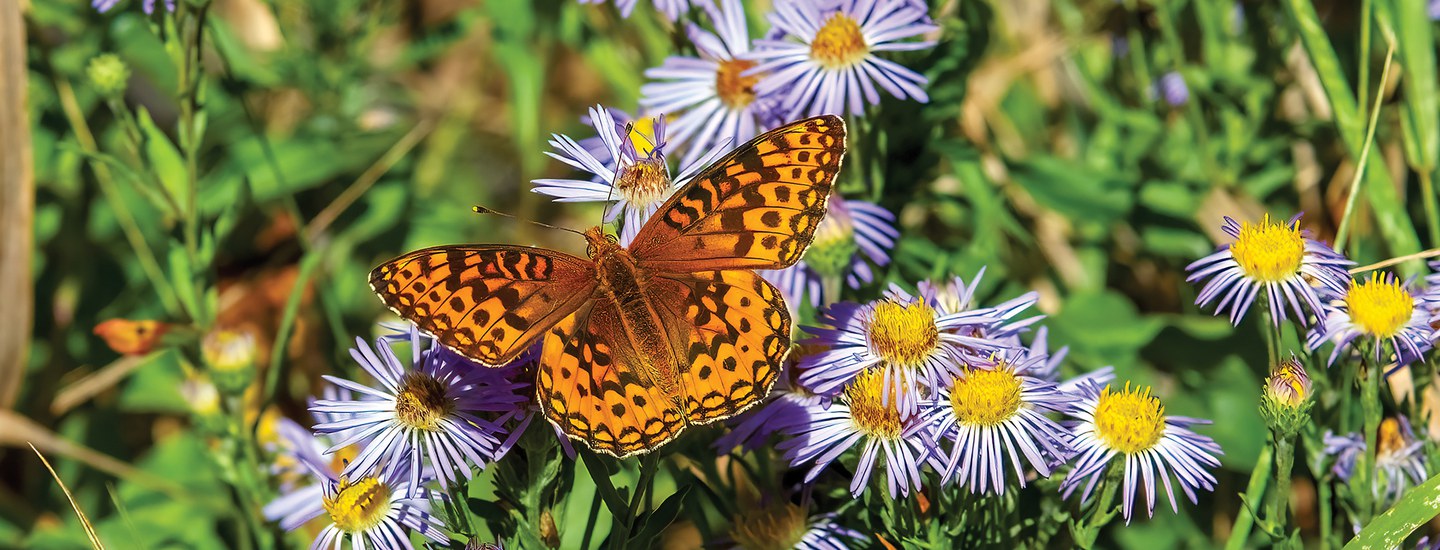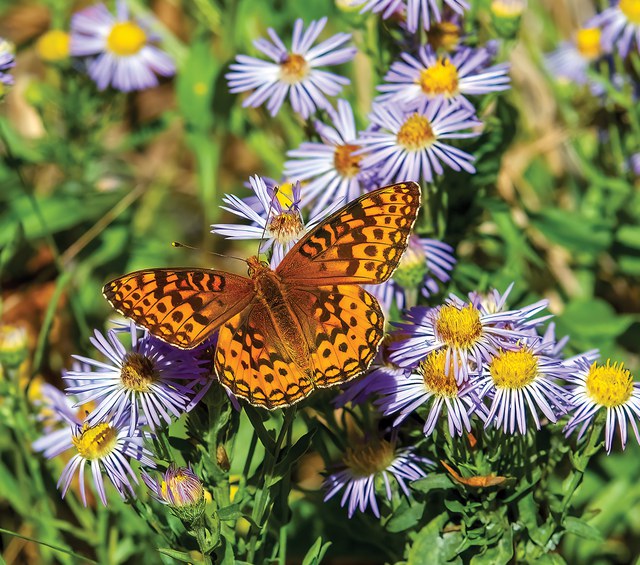You may have heard about a recent study reporting widespread declines in butterfly populations in the United States. What did the study find, why are butterflies declining, how does it relate to our butterflies in Central Oregon, and what can you do to help?

The new report, published in Science in early March, found that there are declines occurring across all families of butterflies throughout the country. From 2000–2020, there has been a cumulative 22% decrease in total number of butterflies. That means declines at every scale, including total number of individual butterflies (abundance) as well as total number of species present (richness). Although there are some butterfly species exhibiting positive trends, 13 times more species are in decline. The desert Southwest has been the hardest hit, while here in the Pacific Northwest, declines appear to be less precipitous.
The data that fueled the study was collected over 20 years from community volunteer and scientific data collection programs across the country. This resulted in 12.6 million individual butterfly records, 554 documented species, and >76,000 surveys from 35 different butterfly monitoring programs!! If it weren’t for the dedication of innumerable volunteers across the country amassing all of this data, researchers wouldn’t have been able to evaluate trends and this study would not have been possible. Community science ROCKS!
The North American Butterfly Association, a nonprofit volunteer-based butterfly survey and conservation organization that’s been counting butterflies across all of North America since 1992, was a primary contributor of this data, and the Land Trust has been participating in annual NABA counts across Central Oregon for many years.
Why are butterflies declining?
Habitat loss is a big factor in population declines. Butterflies simply don’t have access to the habitat they had historically. This includes the loss of host plants where they lay their eggs and nectar plants they feed on. Climate change is also a factor in declines. Shifts in timing and duration of plant growth and nectar availability can cause negative impacts, along with increasing temperatures and decreasing moisture availability. Finally, harmful pesticides, especially neonicotinoids, that are sprayed on plants are then ingested by butterflies when drinking nectar and by caterpillars when foraging on leaves. The chemicals can reduce survival, interrupt growth cycles of caterpillars which can lead to smaller adult butterflies with weaker flight capabilities and reduced reproductive success, and other complications.
As you might guess, the butterflies that are doing relatively well tend to be (but aren’t always) those that tolerate human-dominated habitats and can use a variety of host plants on which to lay their eggs. Other factors contributing to success may include overwintering strategies and a preference for moist instead of dry habitats.
How does it relate to our Central Oregon butterflies?
The decreasing trend in butterflies across the country and in the Pacific Northwest region, does NOT necessarily mean that those trends are occurring here in Central Oregon or, more specifically, at one of the Land Trust’s conserved lands or in your backyard. We simply don’t have the data at that fine scale. But, many of the declining species are found in Central Oregon and the report is an urgent reminder to pay attention. Butterflies and other pollinators need our help! That’s why the Land Trust has been working for years to conserve their habitat and restore native host plant and nectar sources. This report will help us going forward to determine what host and nectar plants are most important so we can ensure these butterflies and other native pollinators have access to the resources they need to thrive.
What can you do to help butterflies?
We're so glad you asked! Restoring habitat is a great way to lend a hand! Here are some ways to help:
- Plant native pollinator-friendly plants in your yard or garden! Native plants provide critical host plant and nectar resources for butterflies. If you plant a mix of natives that bloom May-October, you can ensure there is always some nectar available for our pollinators! Some pollinator-friendly plants that are native to Central Oregon can be found here. You can also plant native showy milkweed and request free milkweed seeds from the Land Trust!
- Buy plants from nurseries that don’t use pesticides. These chemicals can often stay in the leaves and nectar of plants, affecting butterflies and other pollinators long after you’ve taken your plant home. Wintercreek Nursery is a great resource for local plants!
- Don’t use pesticides! Butterflies (and other pollinators) are incredibly vulnerable to pesticides.
- Encourage your neighbors, church, school, etc. to plant native, pollinator-friendly plants. We can only help butterflies if we work together and provide habitat around our region.
- Join the Land Trust! We are committed to doing our part to help native pollinators. This includes planting native milkweed and other native flowers at our Preserves and around our communities, and pulling non-native weeds. Help with these projects or become a member of the Land Trust today!
- Become a Community Scientist. Get involved with groups that help track, educate, and advocate for butterflies! Start Western Monarch Milkweed Mapper, Xerces Society, and Lane County Butterfly Club.
- Learn more: The Land Trust's Monarch and Pollinator Hub.


